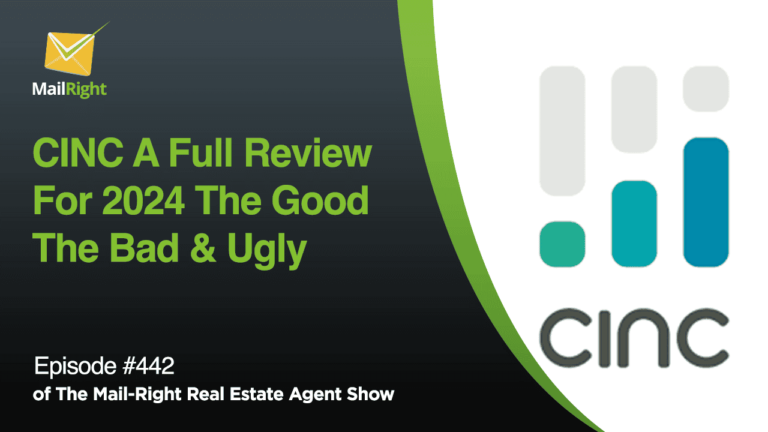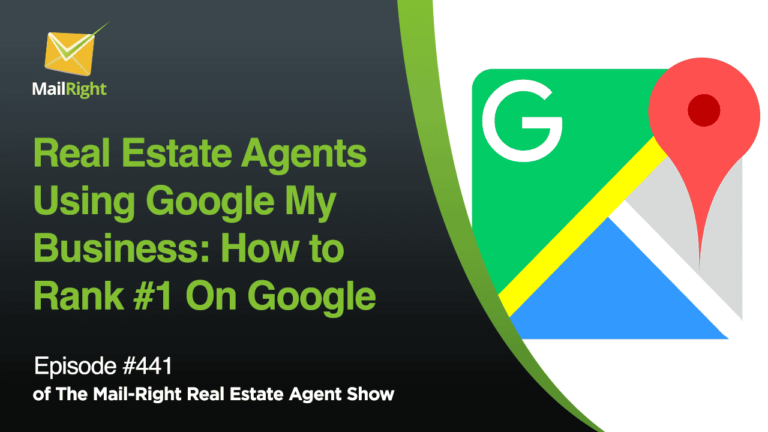On the 345th edition of the Mail Right Show, Jonathan Denwood and Robert Newman discuss real estate SEO that has changed over the years and the Google areas a realtor should focus on. Robert Newman, the CEO of Inbound REM, an inbound marketing firm, has spent the last decade in the real estate SEO business. On the other hand, Jonathan Denwood is the founder and CEO of Mail Right, a platform that combines a variety of digital tools into a streamlined, user-friendly package. Email is one of the most powerful marketing tools available to everyone, and this episode explains how real estate agents can properly utilize email as a marketing tool.
Search Engine Optimization (SEO)
SEO is making the website more visible or ranking on top in Google search results as people put queries connected to a keyword. Over the last few years, the idea of SEO has changed so much. Today, there are four Google sections. These sections are also a part of a search engine but not in the same category— meaning the search is divided. It is still all search engine optimization because it’s the same core algorithm on all platforms.
Some Google algorithms and certain things affect the hyperlocal search result that confuses people, but the core algorithm still underpins all of it and runs certain parts. Most searchers do it on YouTube, hyperlocal, image library, and everywhere. So, you need to know the little independent or unique pieces to each one of the channels that would affect real estate agents.
Google Areas that Realtors Should Focus
The following are the four areas of Google that a realtor should focus on as these are related to lead generation.
Website is one of the most significant opportunities to impress potential buyers. Branding starts with a website. Go for slick and exciting-looking websites, and note that the frame of your message matters a lot when it comes to branding.
YouTube is a powerful place to deliver messages due to its vast audience. You can do slick branding videos and advertising. Put your video message in front of people before a non-personalized clip because it will not generate leads.
Image library. You can do a lot of things with images. You can take beautiful house images and put those into an image library, Instagram, and Facebook. You’ve got something that might go viral with that image. Images become a powerful branding tool and connect very well to the image library, the third wheel of Google’s SEO algorithm.
Hyperlocal is when a specific area is the focus of the content. SEO algorithm for hyperlocal look for NAPS(name, address, phone number, and reviews).
Toping in traditional search results is the most challenging thing to learn in SEO. Hyperlocal is also hard to learn, although one of the most profitable things you can get. The third is Image Library. As little as 30 days is all it takes for an optimized image from an optimized website to appear in the image pack. Saying that you can’t get traffic for a primary heavy load keyword is false. Maybe you can find it in the image library rather than the typical search results. For instance, you might not show on top search results due to other websites dominating, like Zillow or Trulia, but you can see the image you use for your title blog on the image library. Lastly, YouTube videos only take one minute or two to optimize the YouTube videos, and get to the top of search results, depending on the competition for a particular title.
Tools to Leverage Digital Resources
To make working with SEO easier, you can use digital resources. You can use Ahrefs, an expert-level tool, to assist you with various keyword-related things. VID IQ is a great tool to help you with your YouTube videos. It gives a point-and-click way to optimize YouTube videos. KW Finder is a long tail keyword identifier; it generates more keyword research to position a site.





